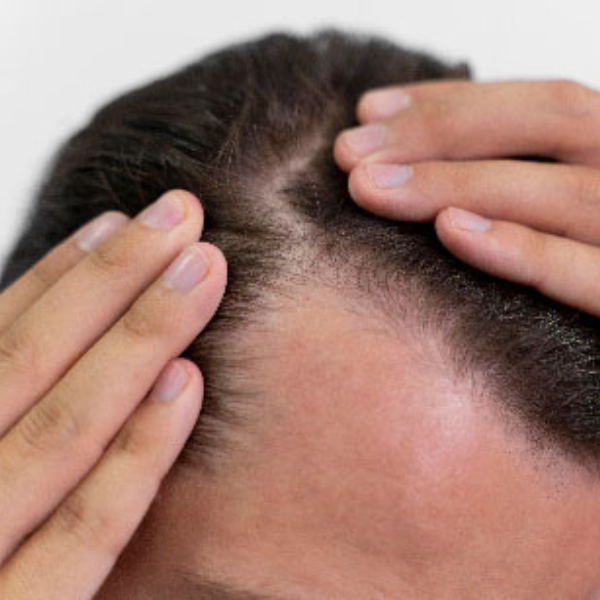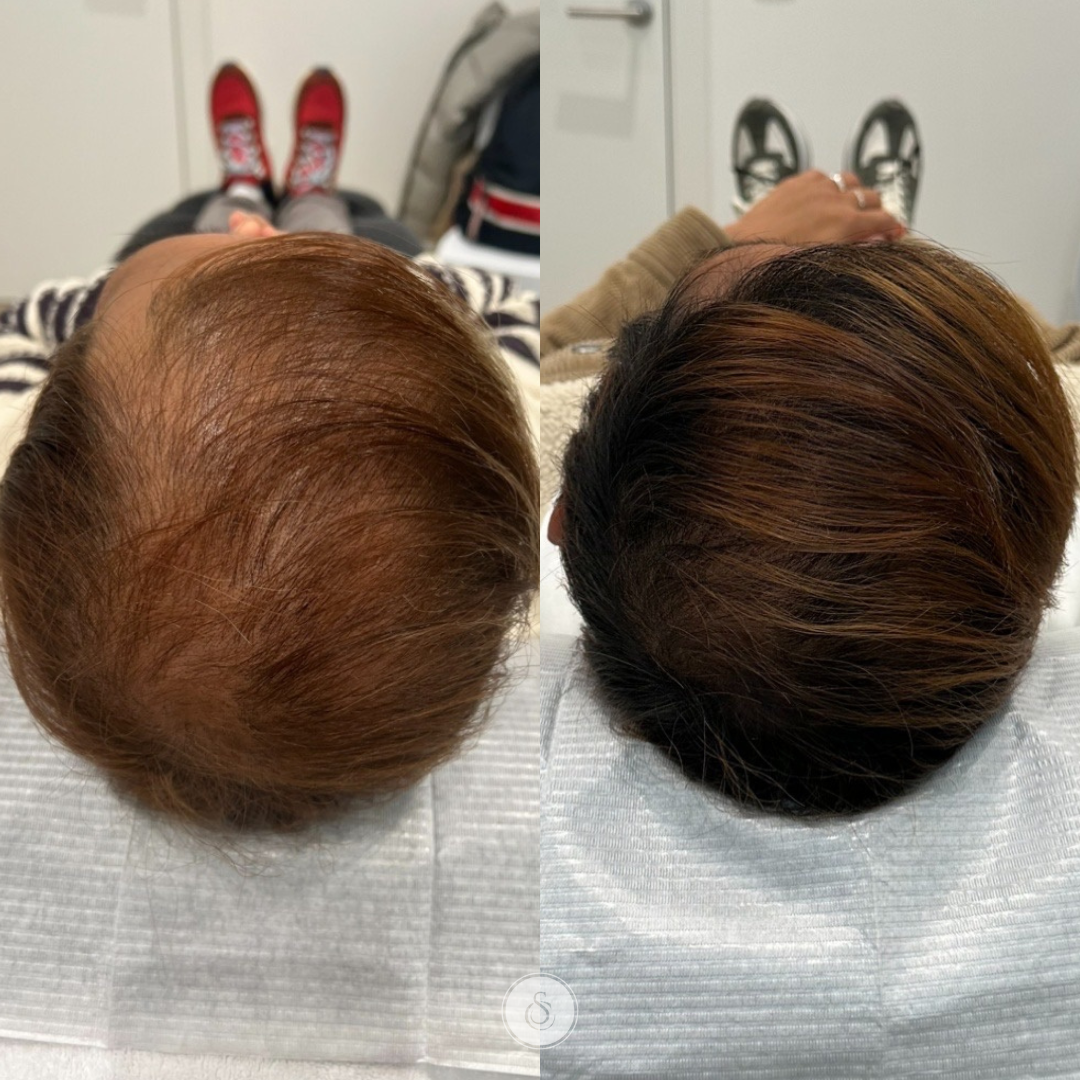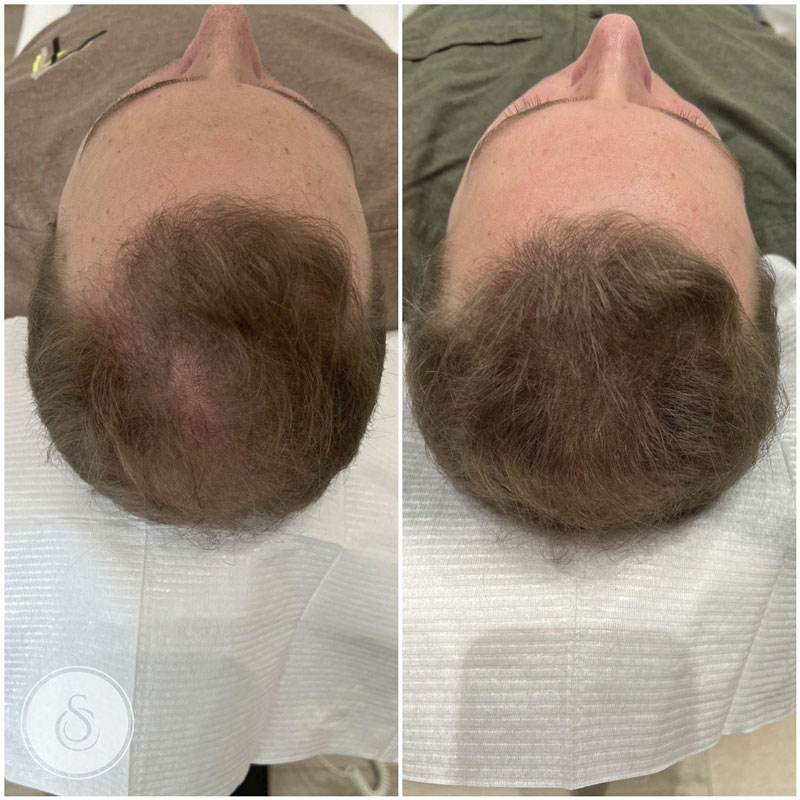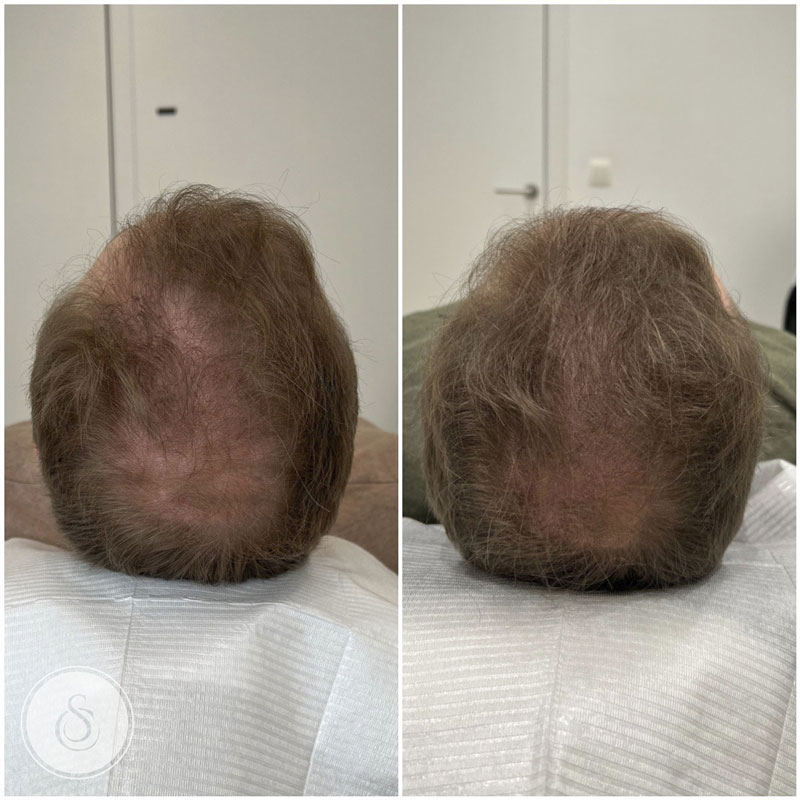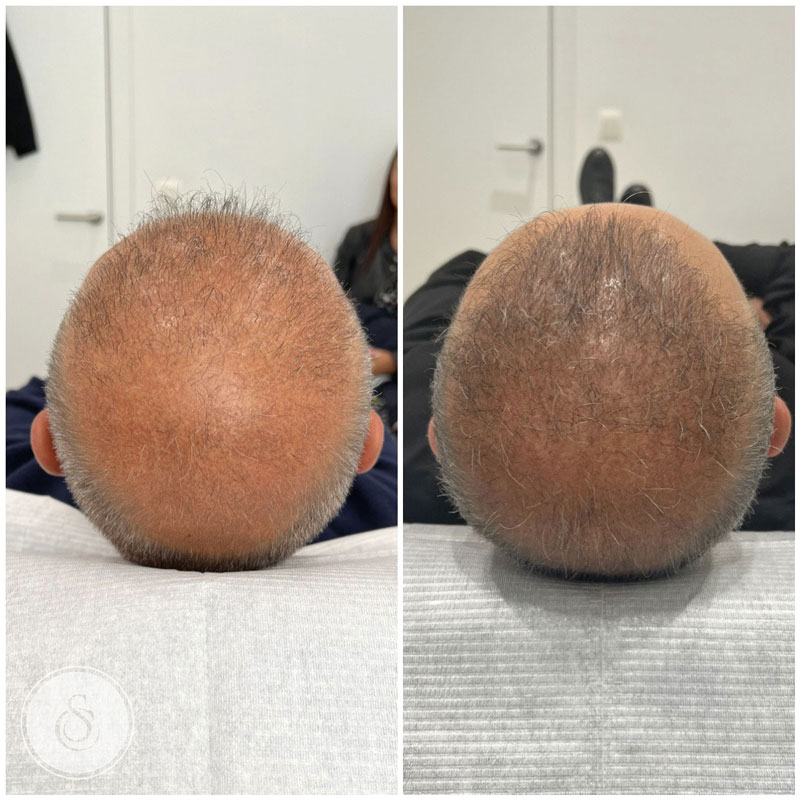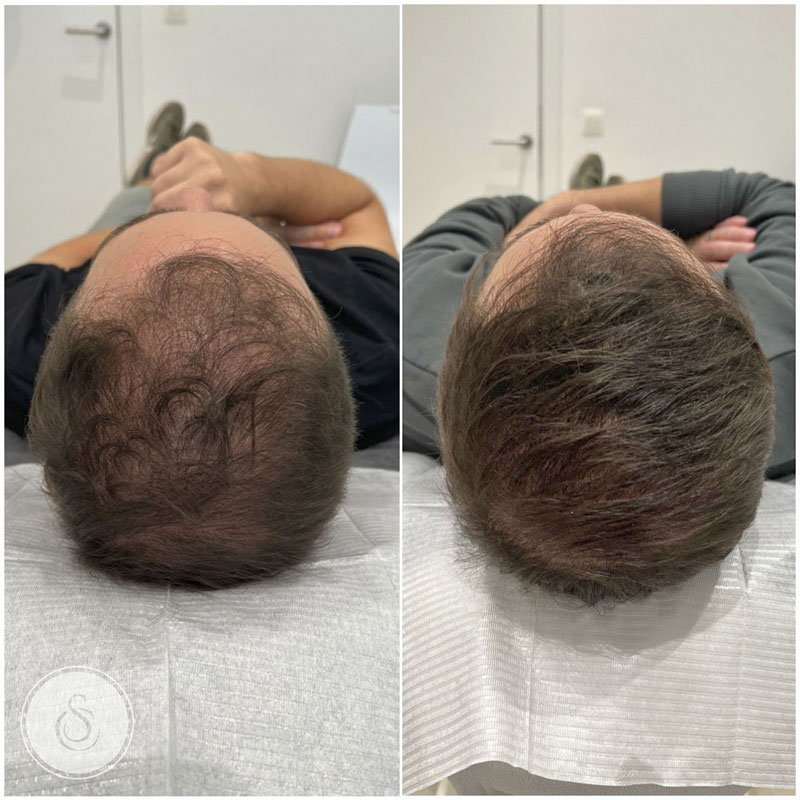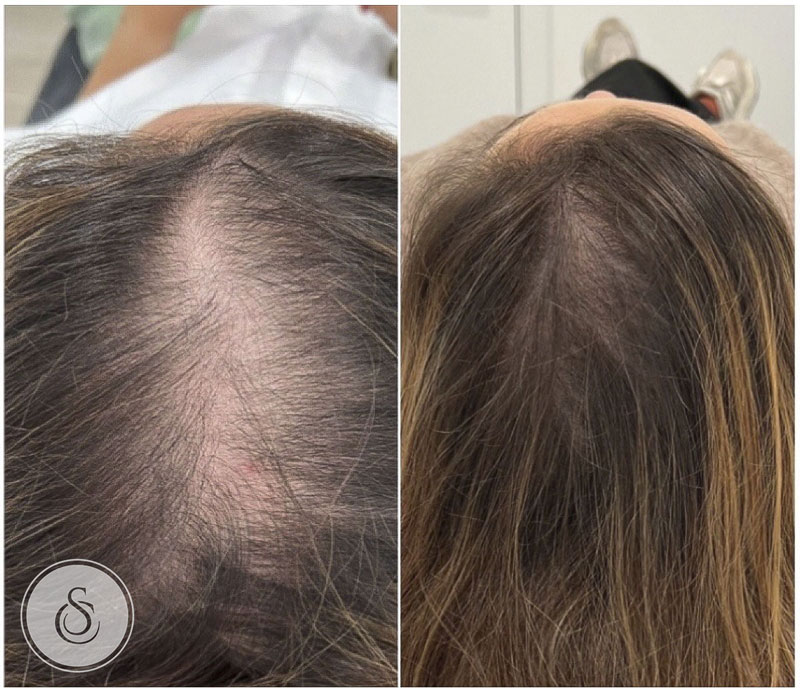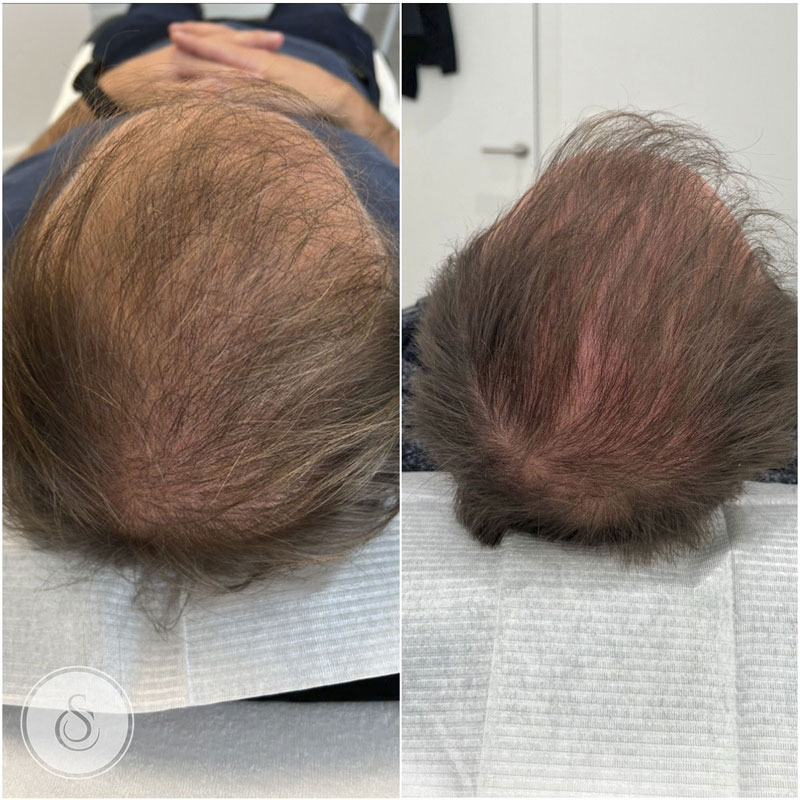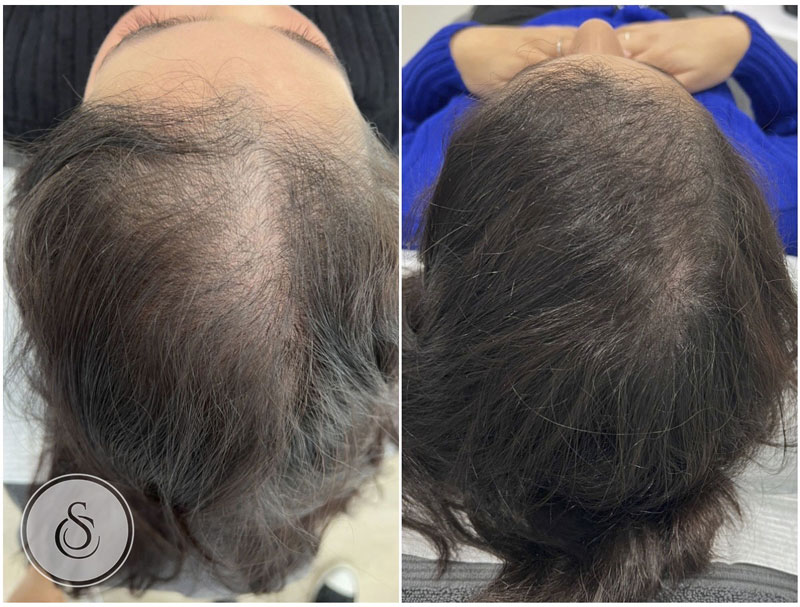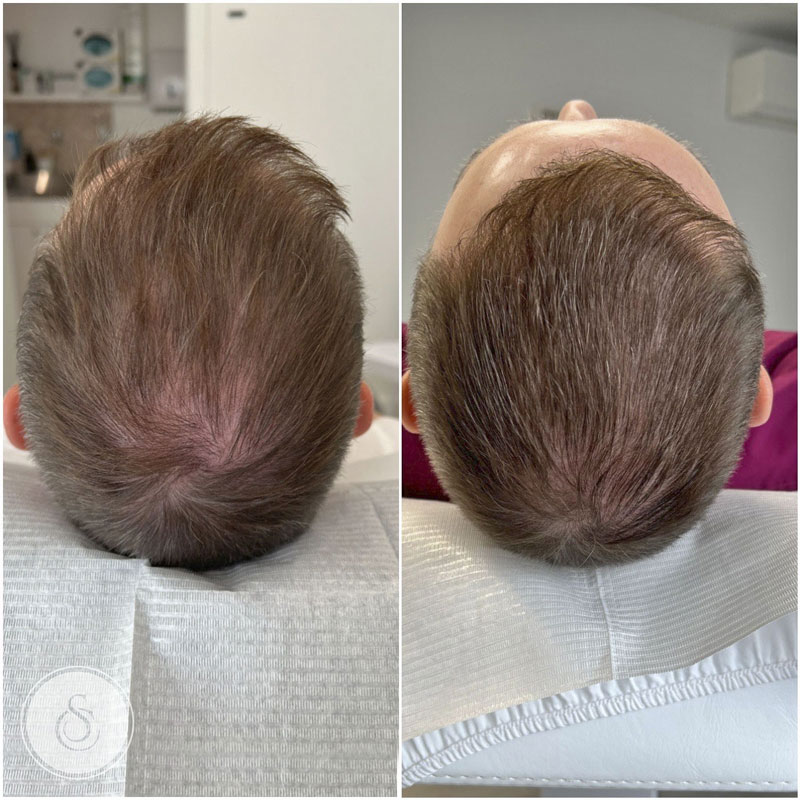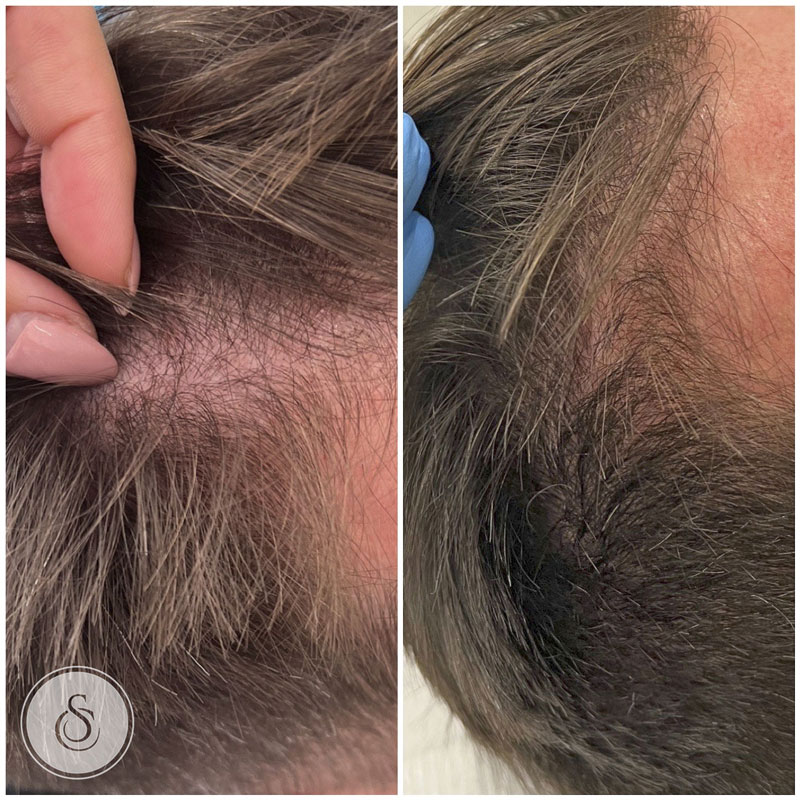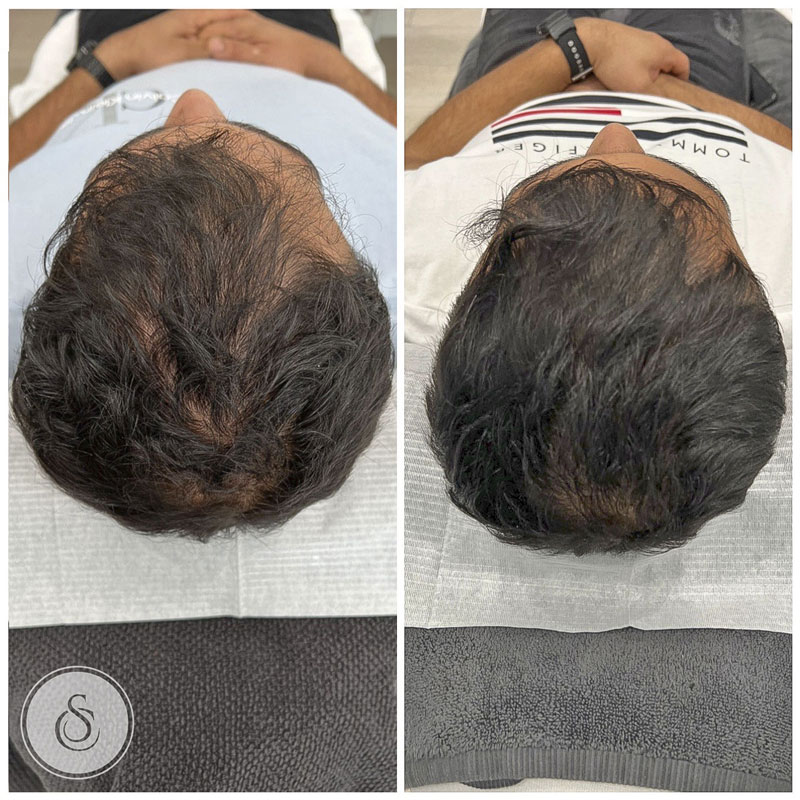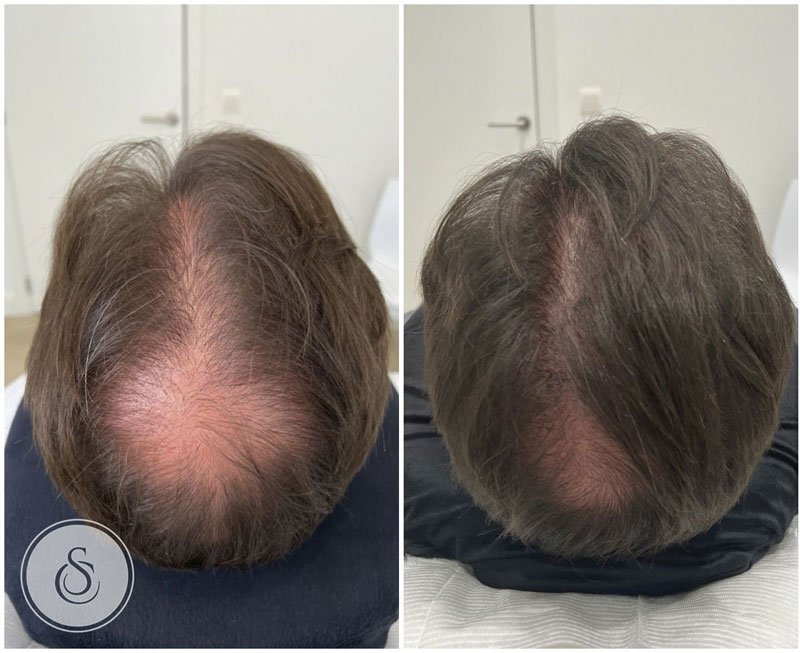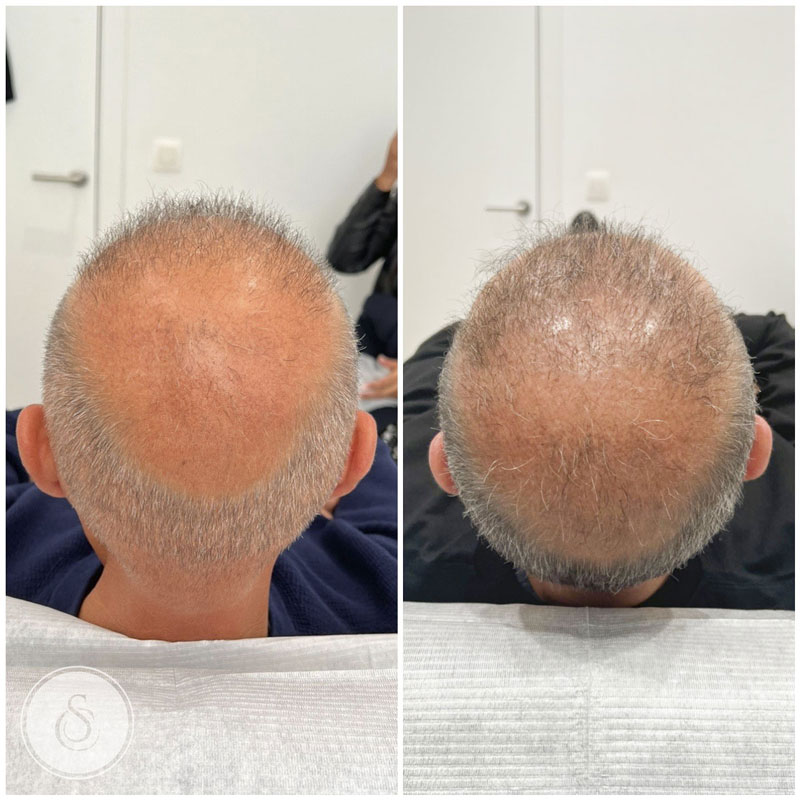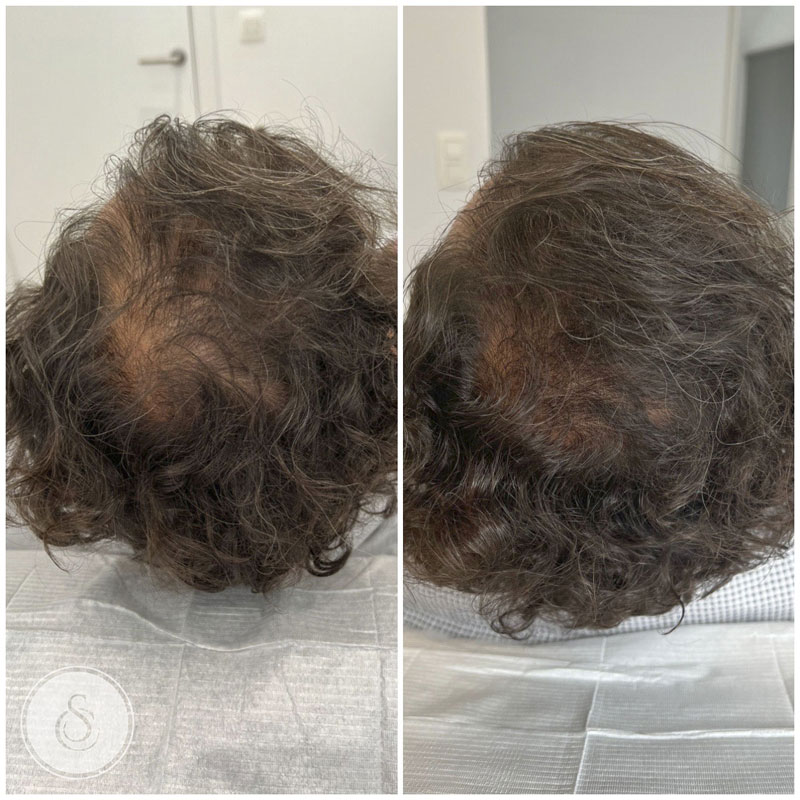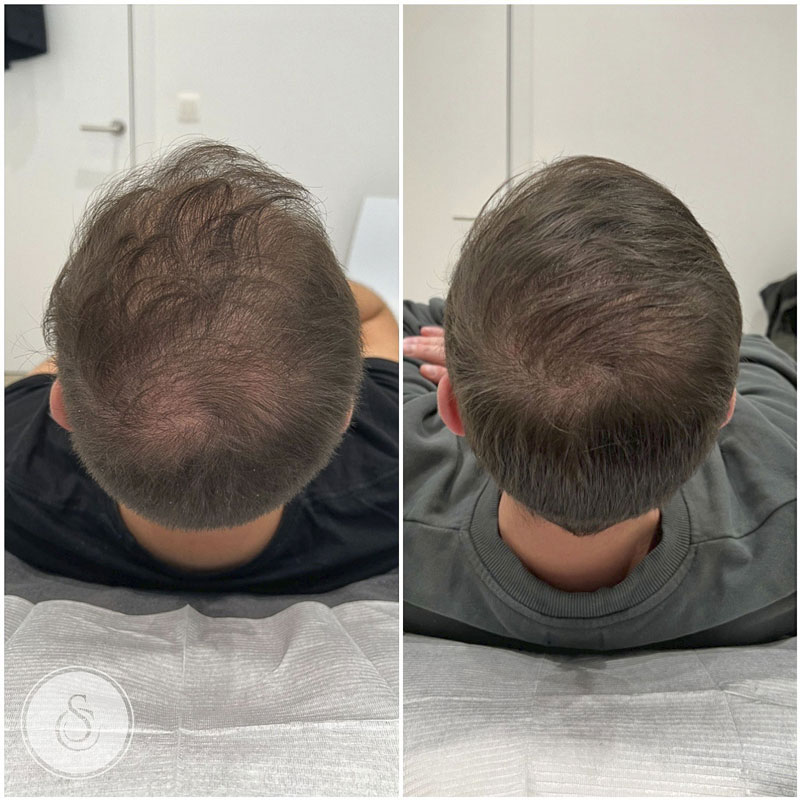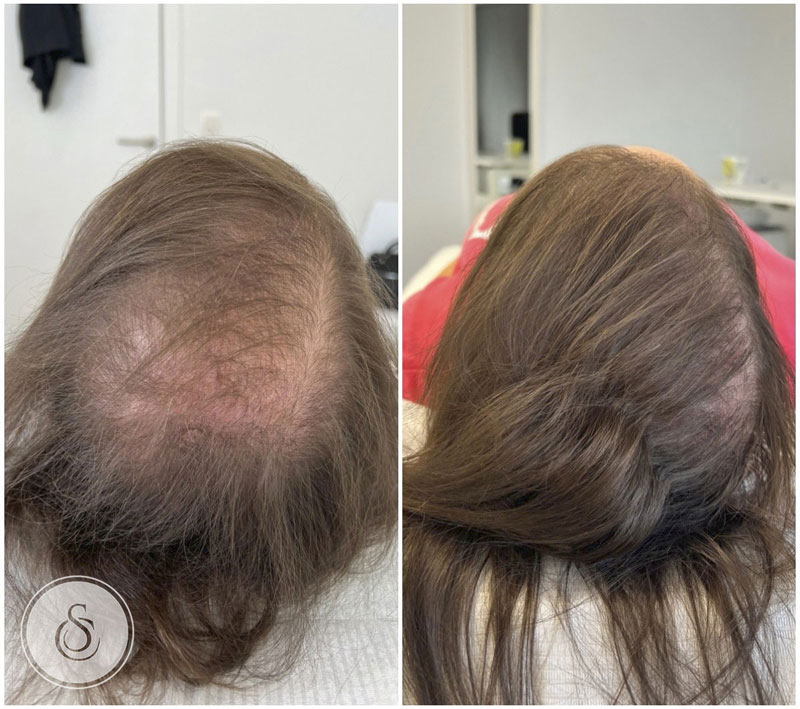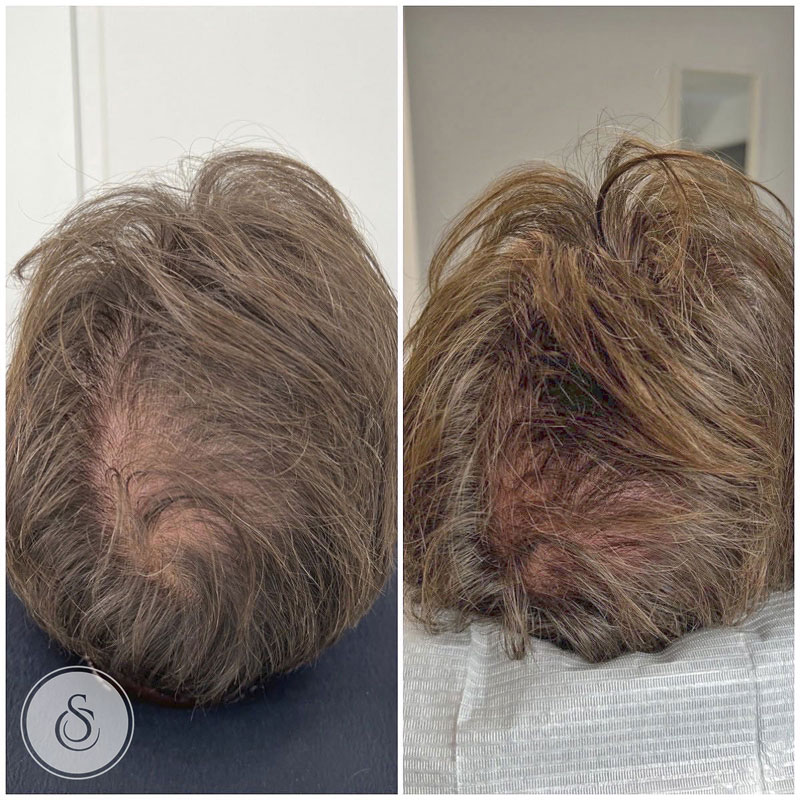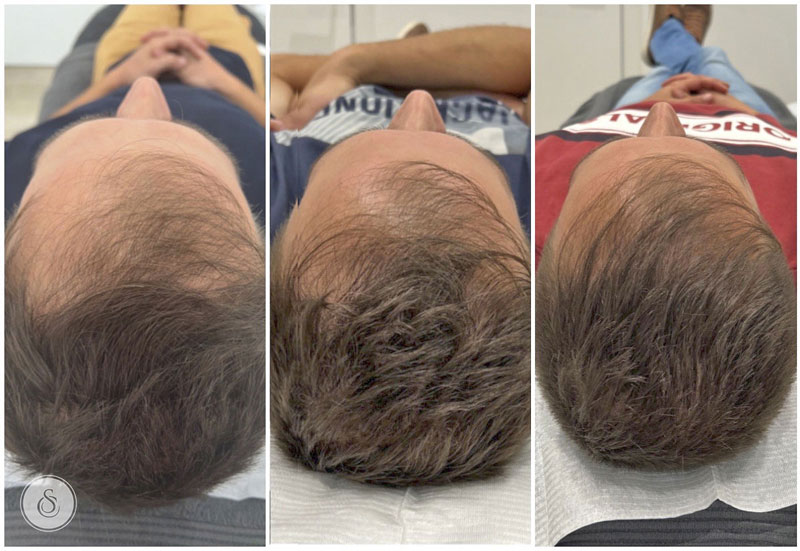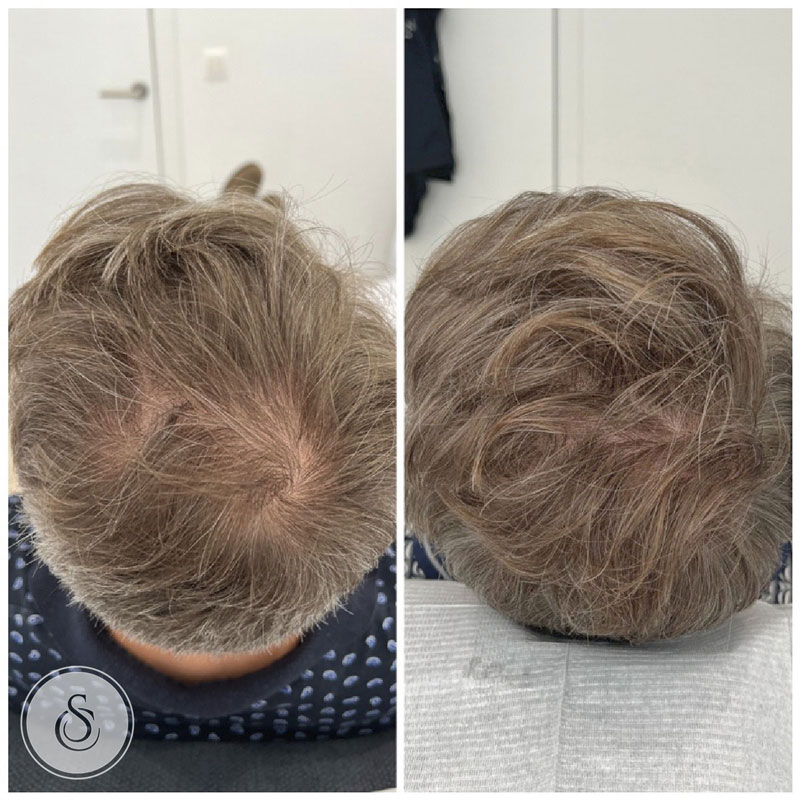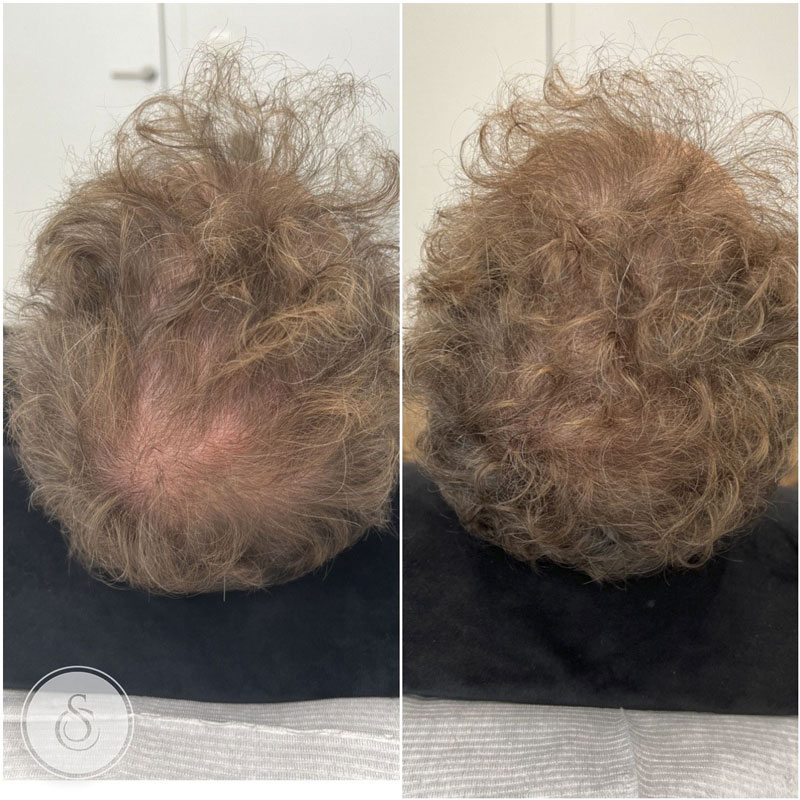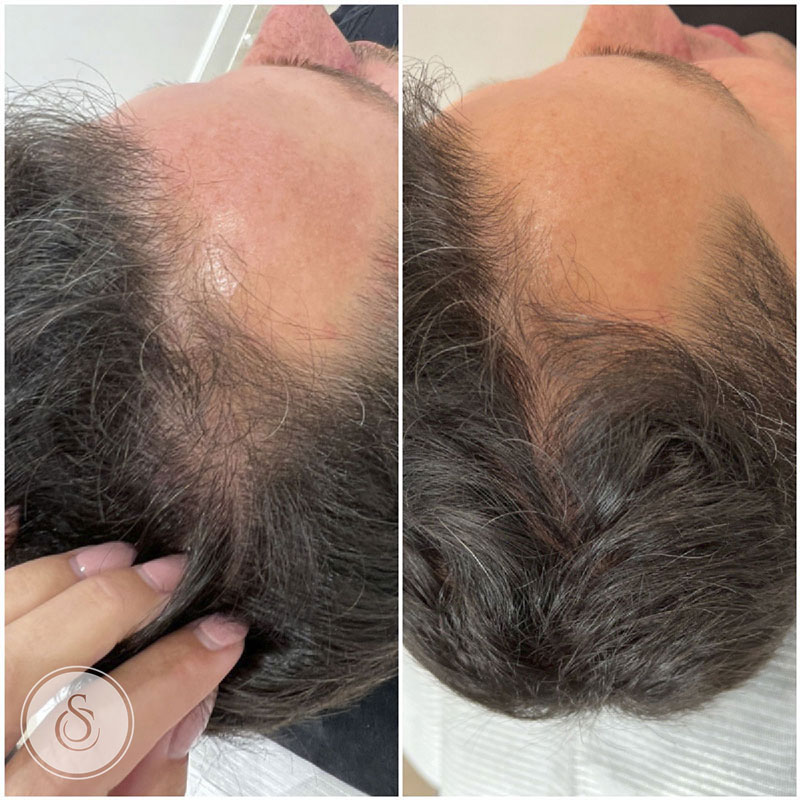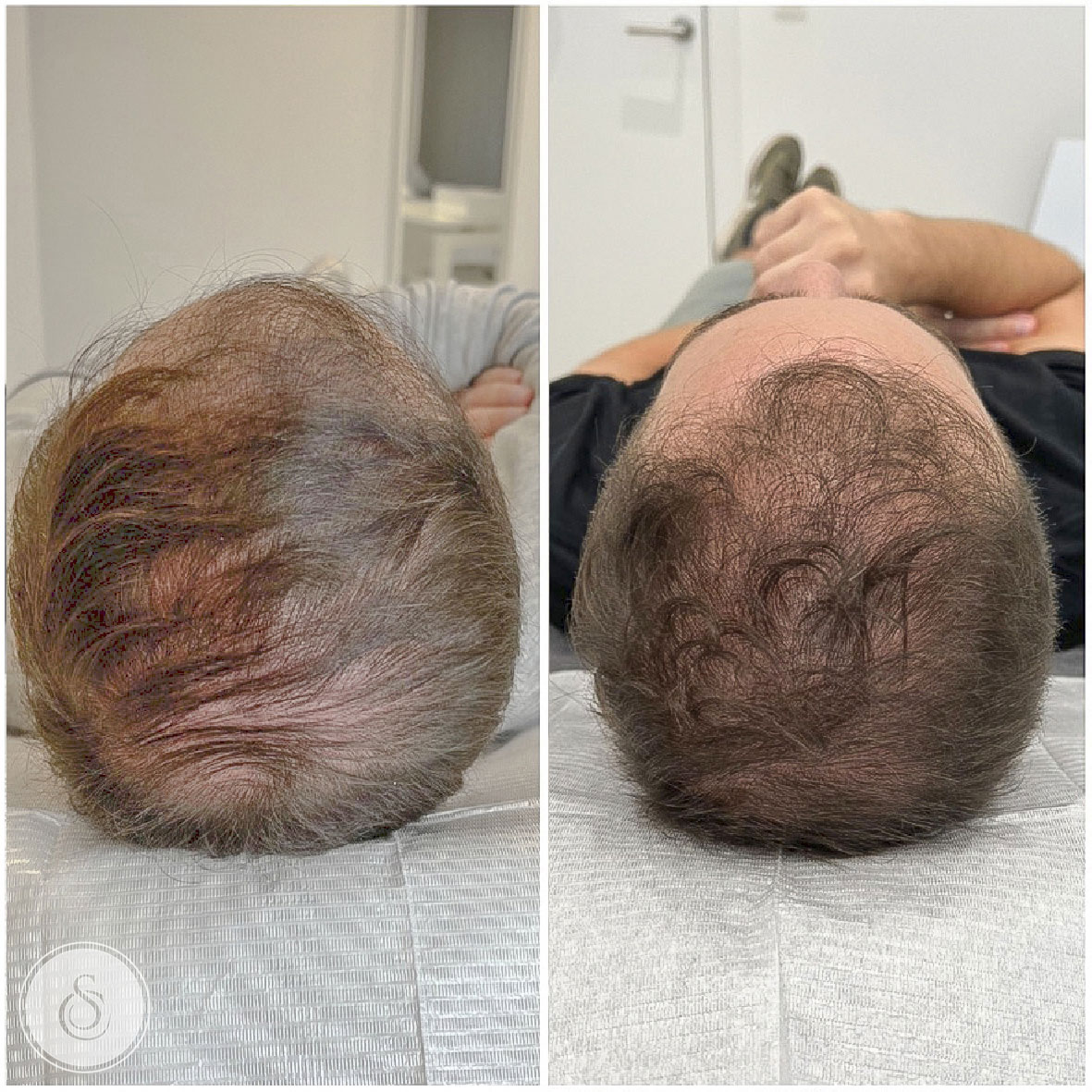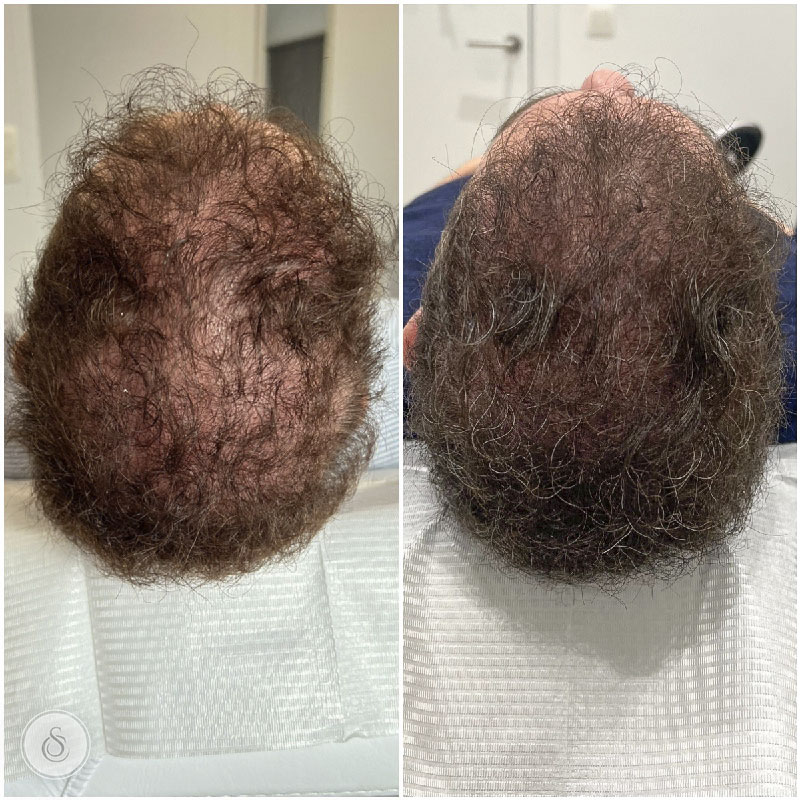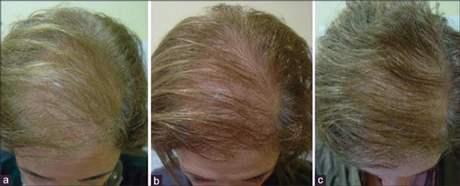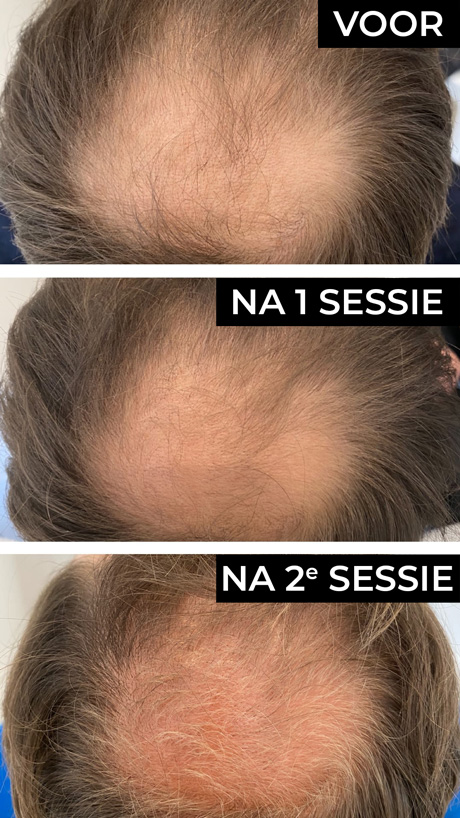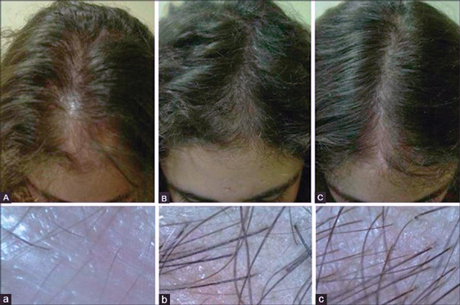Fuller hair with a hair transplant
If you suffer from hair loss or baldness, you obviously like to have an effective treatment. Are you thinking about a hair transplant? We're happy to explain how it works and also mention a few alternatives, such as hair fillers, that may be more effective in restoring a lush head of hair. Hair transplantation is an aesthetic treatment.
How does a hair transplant work?
- The name says it all: a hair transplant involves moving hair follicles from one spot to another. The transplanted hairs continue to grow in the target area, giving you a full head of hair or beard again. It is a surgical procedure that is sometimes recommended for hereditary hair loss.
- For a good hair transplant, you need a good number of grafts (hair follicles containing one or more hairs) that are also qualitative. How many grafts you need depends on the size of the bald spot. Often around 2,600 grafts are used per treatment.
- A few grafts are always left for a possible second treatment. Hair transplantation cannot be done often in your life. So it has to be right the first time.
- There are different methods of hair transplantation, but they are all done under local anesthesia so that the procedure is as painless as possible.
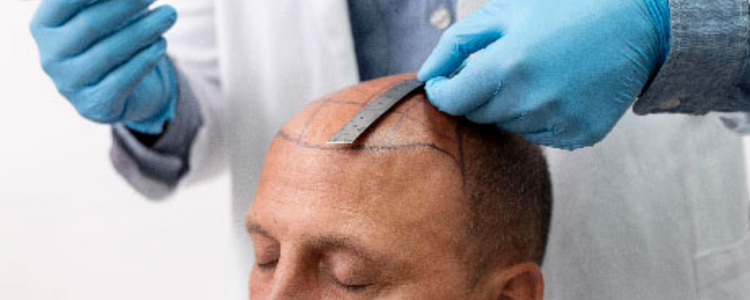
FUT hair transplant
- FUT (Follicle Unit Transplant) treatment is a type of hair transplant that uses a strip of skin on the back of the head. The skin of the donor area is then sutured. Hair follicles are then extracted from the strip of skin and transferred to the bald area. The transplanted hair follicles simply grow back.
- You used to have only the FUT method for a hair transplant, but in the meantime there are several alternatives to address a receding hairline. The FUT method is hardly used now because it leaves a large scar at the back of the head. Longer hair can cover the scar, but it is not an ideal option.
FUE hair transplant
- The method now most common is FUE (Follicular Unit Extraction) hair transplantation. In this technique, hair roots are carefully extracted from the back of the head with a hollow needle. These hair follicles are then replaced in the recipient area.
- The FUE hair transplant does not create visible scars, making it a popular method. Because whole hair roots are used in an FUE hair transplant, a high hair density can be achieved.
- During the procedure, you will be locally anesthetized. An FUE hair transplant is fairly labor intensive though: it often takes around 5 hours. A hair transplant often also requires you to be prepared to walk around with short hair for a while. Before harvesting the grafts, the hair usually has to be shaved off. A hair transplant in which long hairs are transplanted is often much more time intensive.
HST hair transplant
- One of the newest hair transplant techniques developed in recent years is hair stem transplantation (HST). In this procedure, the hair follicles are harvested with a tiny hollow needle, but parts of the hair follicles remain. As a result, new hairs grow in the recipient area but also in the donor area through the hair stems left behind.
- The number of grafts required for a hair stem transplant is lower. However, it is still an expensive treatment for which a treating physician certainly needs sufficient expertise.
Interested in all the advantages and disadvantages of the different hair transplant methods? This article from O2 Clinic explains everything clearly.
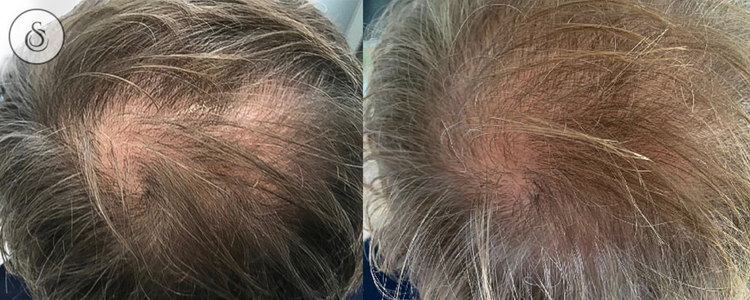
Recovery from a hair transplant
- In the first week after a hair transplant, you must be careful with the treated area. This is because you should not wash your hair or use any grooming products for a week.
- Exercise or heavy physical activity is also not recommended because it can have an effect on the transplanted hairs. You should cover your head as much as possible in the first few weeks. The pain does not last long, but it often takes a year before you know the final result of your hair transplant.
- It is important that the recovery from your hair transplant goes well. Otherwise, hairs may fall out or prevent the growth of new hairs. So in terms of recovery, a hair transplant is a lot more intensive than other alternatives.
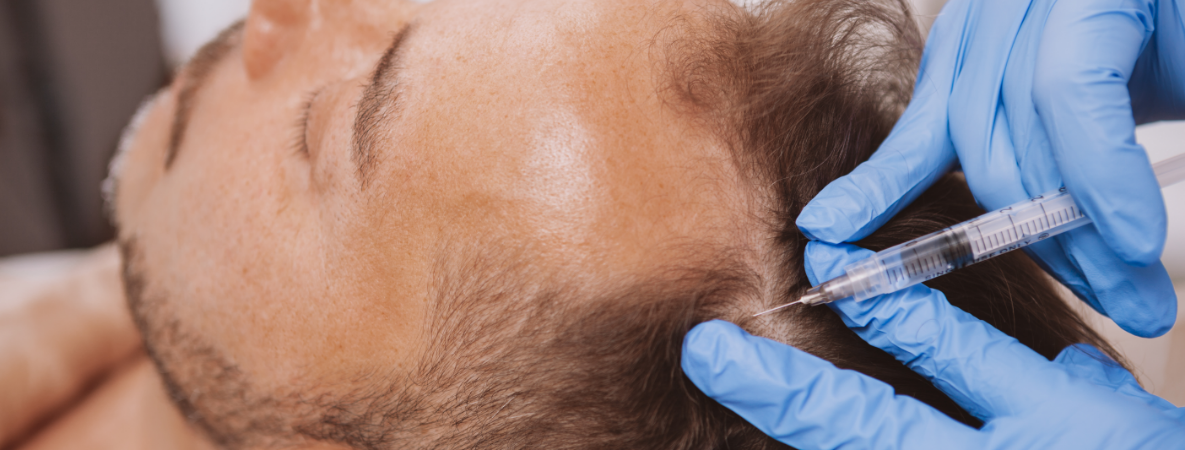
Alternatives to hair transplantation
A hair transplant can sometimes be a little too heavy a procedure for the bald patches you have. A hair transplant can also occasionally go wrong. This often involves surgeons who are too cheap and do not do a good job.
Certainly not all hair transplant experiences are negative, but for some people there are better alternatives that are much less invasive and have a much shorter recovery period. Those who prefer not to undergo invasive treatment can certainly benefit greatly from the following alternatives that encourage new hair growth:
Hair fillers
-
- Hair filler is a new medical treatment that can combat hereditary hair loss. A hair filler treatment uses peptide technology to stimulate the natural (re)growth of hair.
- There are many factors that can affect vulnerable hair follicles. This can lead to thinning hair. With an effective injection treatment with peptides, further hair loss can be inhibited and new hair growth can even be stimulated!
- Hair fillers can already provide good results for many people without the need for surgery. Still not convinced? This video fully explains why hair fillers are so effective: Sarasin Clinic How Hair Filler Works.
- For best long-term results, we recommend using Pelo Baum Hair Revitalizing Solution daily during and after the Hair Filler treatment.
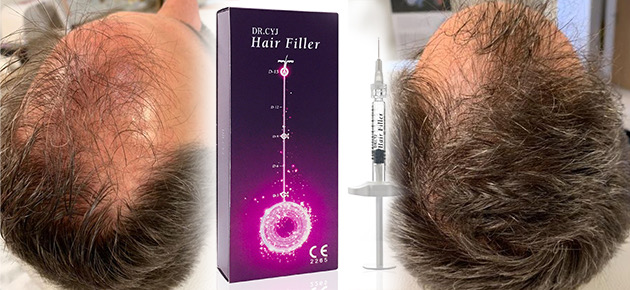
PRP treatment
- Instead of hair fillers, you can also opt for PRP treatment. This uses the body's own substances to improve the quality of your hair. No foreign materials, just the power of your own body cells.
- During PRP treatment, a blood sample is taken from the patient. In a centrifuge, the red blood cells are separated from the white blood cells. This leaves behind PRP, which contains lots of growth factors. The doctor injects this "liquid gold" into the areas where hair growth is to be stimulated.
- PRP treatment can be a perfect complement to a hair transplant. PRP injections do not have the desired effect on everyone. In such cases, hair fillers are opted for.
Read Nina editor Liesbeth's positive experience with PRP treatment.
A natural result
- With failed hair transplants, one of the biggest complaints is that the result does not look natural at all. The transplanted hairs do not grow in the natural growth direction or there is no natural hairline at all.
- In fact, solving hair loss is more than just filling in balding patches. It is then often advisable to find methods that stimulate hair growth and inhibit hair loss. So definitely do not immediately reach for a hair transplant. Try other excellent methods such as hair fillers or PRP treatment.
Frequently asked questions about hair transplants
Is a hair transplant something for me?
- Do you suffer from bald spots? Then a hair transplant can be a good solution to permanently fill in the hairline. However, it should always be checked first if no other cause can be found for the hair loss.
- A hair transplant also requires that a sufficient number of grafts can be removed from the donor area. If this is not possible, you cannot have a hair transplant.
Is a hair transplant painful?
- No. All possible methods (FUT/FUE hair transplant, hair stem transplant) are performed under local anesthesia. During the healing process, the treated skin, where the grafts are placed, can feel painful. Painkillers are often used before and after the treatment to reduce this pain.
How much does a hair transplant cost?
- Because hair transplants have no medical necessity, they are not reimbursed by health insurance. Depending on the method, the price can fluctuate. The FUE technique often costs more than the outdated FUT method.
- You can sometimes find cheaper clinics, especially in Turkey. However, the quality of such treatments are anything but good. You may save some money, but you are suddenly left with a lot of problems. You also can't get a hair transplant fixed because there is a limit on how many grafts you can extract from a donor area.
Will I get scars from a hair transplant?
- Depending on the method, you are going to see more or less visible marks on your scalp. With an FUT hair transplant, you get a large scar because a strip of skin has to be sutured.
- With the FUE technique, you do not get scars, but there may be small visible bald spots where the grafts have been removed. Generally, these spots are not very visible unless too many hairs have fallen out during the repair.
- With any surgery, inflammation is a possible risk. This can cause additional scarring or alopecia (baldness). Therefore, always choose a doctor with experience in this procedure. With hair transplants, it is particularly important to go for quality.
Video hair transplant alternative: hair filler
Video hair transplant alternative: PRP against hair loss
Hair transplant alternative: hair filler before and after
Hair transplant alternative: PRP against hair loss before and after
Hair transplant alternative price
| Hair filler treatments prices | |
|---|---|
| Hair filler small zone (1ml) | €200/session |
| Hair filler medium zone (2ml) | €300/session |
| Hair filler large zone (3ml) | €400/session |
| PRP treatments prices | |
|---|---|
| PRP treatments | |
| PRP 1st session | €350/session |
| PRP 2nd session | €350/session |
| PRP last session (for 3 sessions total) | €250/session |
| PRP for the lips | €350/session |
| PRP skin improvement | €350/session |
| PRP against hair loss | €350/session |




